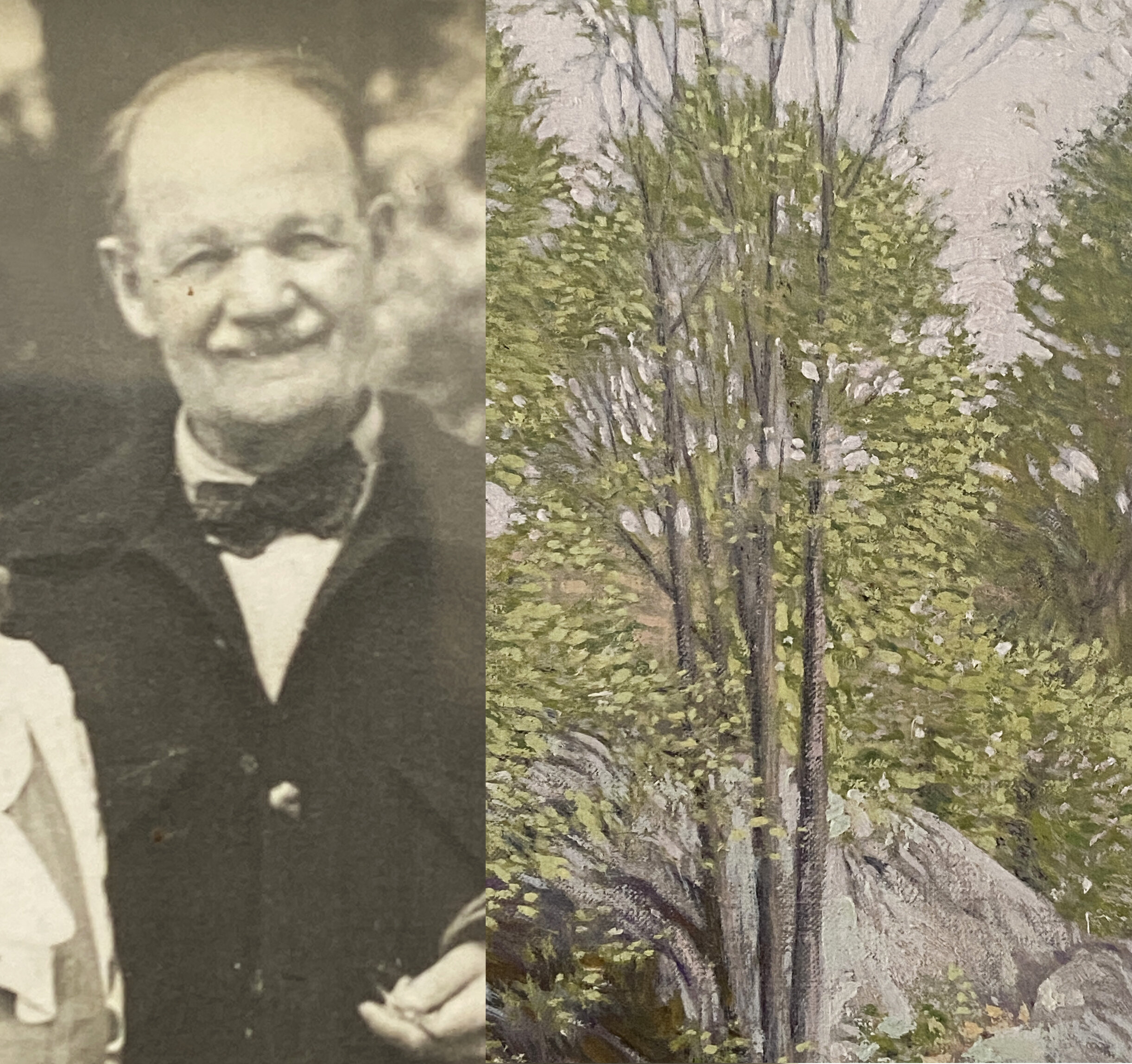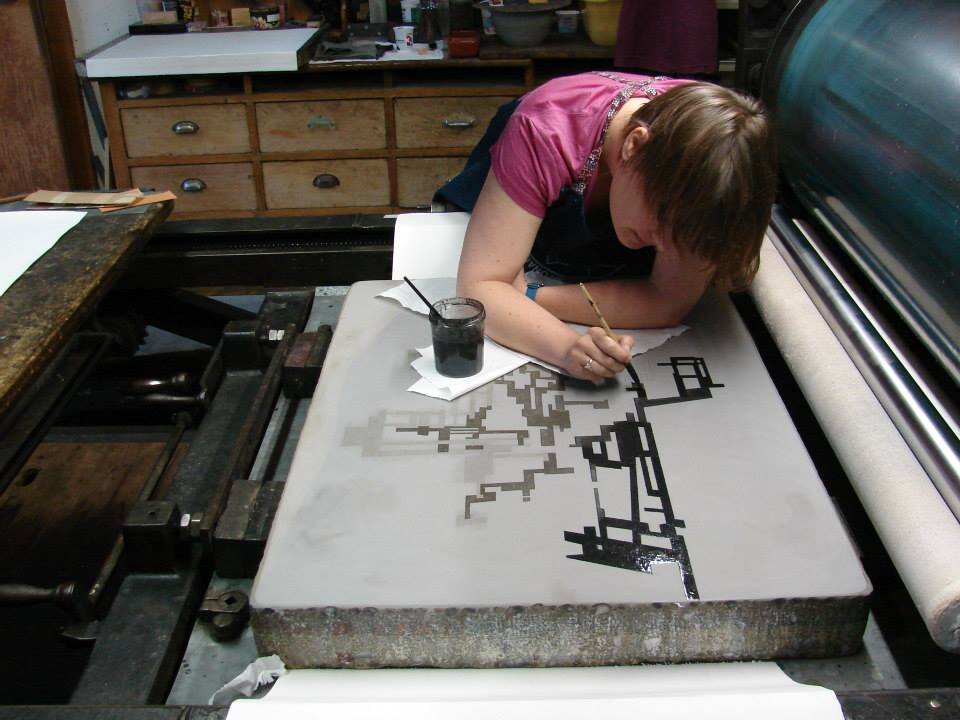About - Sarah Pike
What is your artistic lineage?
I spent my childhood running back and forth between my home and my grandmother’s. Both of her parents, Frank and Helen DuMond, were painters. Stories of my great-grandfather and his love of nature permeated my early life, along with the prismatic palette of his paintings. A lifelong teacher, Frank Vincent DuMond taught many notable artists at The Art Students League in New York City. When it came time for me to go to art school, I sought out several of his former students. One of these, the petite but formidable Fran Weston Hoyt, welcomed me into her circle. For seven years I spent my spring and summer breaks in New Hampshire painting with Fran, learning the DuMond palette. For Fran, there was no moment in which seeing, immersing oneself in nature, and making art were not connected. The generational synapse was complete: Fran, who had learned this connection from my great-grandfather, taught it to me.
I painted with Fran up until the day she died. I was out painting at one of her favorite spots when I got the call. While her death severed the last living tie I had to my great-grandfather, his palette and theory of working chromatically with color are still alive in my own practice, and his inclusive, artist-to-artist teaching philosophy animates my own teaching. His lessons have seeped into everything I create, from sketches, prints and paintings — to my use of laser cutting in my work and teaching others how to use it in theirs.
What led you to printmaking?
I enrolled at the Pennsylvania Academy of the Fine Arts with a major in painting and a minor in printmaking. But the time I spent in the print shop, however exhilarating, was siphoning off time from my first love of painting, so I reluctantly dropped my minor. It wasn’t until I landed a job at Bennington College running its printmaking facility and I found myself in transition after finishing a series of paintings, that I waded back into lithography. I wanted to return to the dialogue I'd begun in college with this process-driven, deeply physical medium that "talks back" to me. The ensuing conversation transformed my figurative work into a series of architectural explorations of our relationship to place. While the subject matter and medium were undergoing a change, my chromatic approach to color — the legacy of my great-grandfather Frank — simply found a new home in the mixing and layering of ink.
During this time I made up my mind to travel every other year to produce work in print shops outside of the U.S. I was invited to residencies in Belgium at the Frans Masereel Center, and in Germany at Steindruck München in Munich and carpe plumbum in Leipzig. I was glad for the opportunity to collaborate with master printers in Switzerland at Steindruckerei of Ernst and Erika Hanke in Ringgenberg, and in Germany at Keystone Editions in Berlin and Stein_Werk in Leipzig.
How did someone trained as a traditional painter become involved in laser cutting technology?
Following a six-month artist residency in Leipzig, I returned to Bennington College where a newly purchased laser cutter had taken up residency. I promptly signed up for the course offered to staff — and, as important, secured a key to the room for after-hours experiments. As a printmaker, I initially saw the laser cutter more as a printing press or acid bath than a fabrication tool. But my research and experiments into how materials react to the heat of the laser opened up new horizons. My adventure began with very fine engraving of paper and shaving off partial layers of ink on print, and continued as I discovered ways to integrate laser cutting applications into the fine arts.
I know artists who view traditional practice as incompatible with new technologies. But rather than a dichotomy, I see them as connected by a permeable membrane that I can cross back and forth to reap the advantages of combining passed-down knowledge with technological invention to create a dynamic hybrid that uplifts both.
My ongoing exploration of materials, coupled with an approach that integrates the hand and technology, are at the heart of FreeFall Laser, the laser cutting business I established to create custom work for and with artists. At the FreeFall Laser studio, I help multidisciplinary artists develop their skill set and flex their creativity by incorporating laser cutting into their handcrafted pieces.
What brought you back to landscape?
About a year after opening FreeFall Laser, I feared that my personal studio practice had plateaued. Unsure of what to do next, I committed to going for a walk in the woods every day after work and sketching. I didn’t know what would come of it, but I heard Fran's voice reassuring me that if I reconnected to spending time in nature and drawing what I saw, it would take me somewhere.
That summer and fall, in the haven of my sketchbook, I filled page after page with landscapes, first using permanent pen and then watercolor. When the New England winter descended and the cold kept me inside, I thumbed through my sketchbook drawings and out of them created unique screen-prints. This seasonal cycle of using the summer to draw outdoors and the winter to re-envision the sketches in different media has become for me a source of continual renewal.
In returning to landscape, I have gotten back in touch with something deep inside me. Every time I head out to amble in the woods, I feel myself reunited with Fran and my great-grandfather, still learning from them as I interpret the sensory experience of the landscape before me, in my own way.



